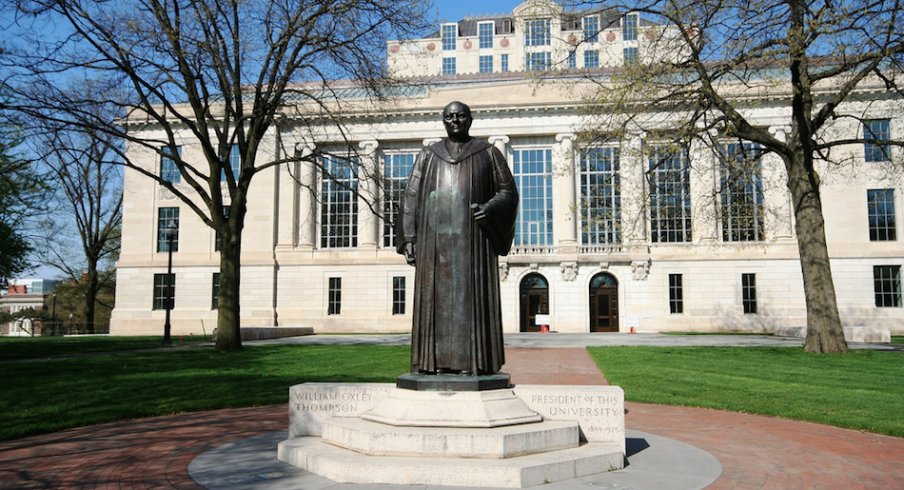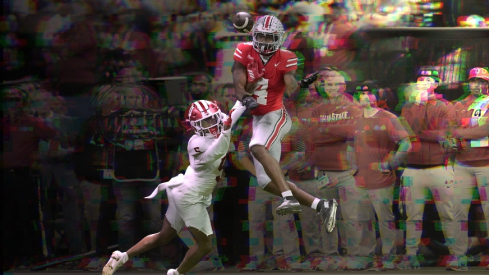Welcome to Campus Connection, the only place where you'll see coverage of the Ohio State pottery club or chess team throughout the interwebs.
At Ohio State, one of the most renowned artistic features of the university is the statue of William Oxley Thompson, president of the Ohio State University from 1899-1924. The statue was created by Erwin Frey, a sculptor from Ohio, and is made entirely out of bronze.
There are many remarkable details within the statue itself, but the first feature to analyze is the purpose of the sculpture. Of course, the main purpose the sculpture was built is to honor Thompson, the fifth president of the university and the longest serving, but there is another purpose as well.
Located right outside of the entrance of the Thompson Library, the sculpture provides an ideal artistic foreground to what is arguably the most iconic academic building on campus.
While many campus buildings — such as Jennings Hall or Drackett Tower — simply have portraits of their namesakes on the walls, the Thompson Library has the likeness in statue form, perfectly positioned for students, faculty, and visitors to be able to see it every time they walk to the library.
Another purpose of the sculpture is to provide a link to the rich past that is held at Ohio State. As the university was established in 1870, and the statue in 1930, much has obviously happened since then. However, the statue allows for a link to the past that will not be broken until the eventual removal or replacement of the original piece, which still stands in its original spot.
One interesting thing about the statue is the attire of Thompson. He is dressed in academic wear, something that was not terribly common then (and is still not terribly common now) even for the president of the university. The garb shields most of his body from view, except for his head, neck, and hands. This features are therefore accentuated, as the rest of the body is hidden.
Something that I noticed immediately was how Thompson appears to be standing up very straight, which shows his power and status. Of course, standing up straight and good posture in general are commonly associated with power and standing within a society. In this case, with Thompson being the leader of the university, he has ultimate power and therefore is able to convey that through his posture.
The only other part of the body that we can see is Thompson’s hands. In his left hand, Thompson holds a scrolled diploma, once again signifying that he was a powerful academic figure. His right hand is at his side. One thing that is interesting is how the left hand, rather than the right hand, is the one holding the diploma, as most people are right handed and thus that hand is emphasized more often.
Another significant aspect of the sculpture is that it is made out of bronze. In this case, the statue is constructed from bronze to signify to the nobility and wealth of not only Thompson himself, but the university. As the statue was unveiled in 1930, it was the beginning of the true era of prosperity for the university, 60 years after its founding.
The base of the sculpture — the steps on which it is situated — is another key feature. For one, while the statue is not much taller than actual size, the foot or so it raises out of the ground due to the steps allow for the statue to be towered over the general population.
This statue has several effects on a member of the Ohio State "fraternity". First of all, the statue is meant to stand as a marker on the Oval, as that is probably the most famous spot at Ohio State. As one is to walk into the library named after him, seeing the large bronze Thompson statue can evoke feelings of pride and wonder as they look at it. For starters, the fact that the statue is in the most prominent spot possible allows for it to be enjoyed by the masses who walk through Ohio State throughout the days for various reasons.
Overall, however, for the 87 years and counting that the statue has existed, it has been able to provoke many into appreciating the thought and art it has brought to the university.
If you have a club, activity, or group that would like to be profiled for Campus Connection, send an email to david@elevenwarriors.com.


